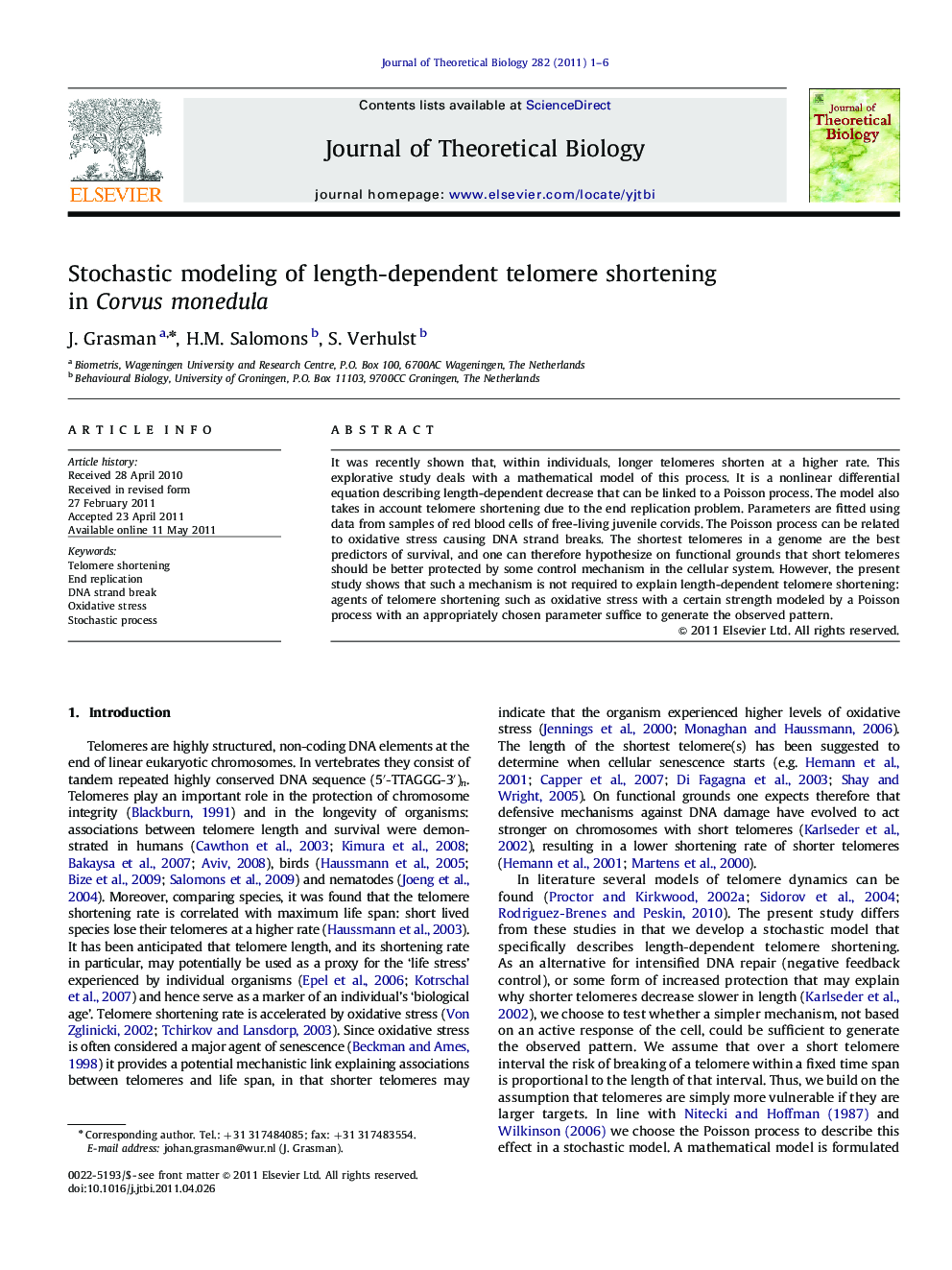| Article ID | Journal | Published Year | Pages | File Type |
|---|---|---|---|---|
| 4497022 | Journal of Theoretical Biology | 2011 | 6 Pages |
It was recently shown that, within individuals, longer telomeres shorten at a higher rate. This explorative study deals with a mathematical model of this process. It is a nonlinear differential equation describing length-dependent decrease that can be linked to a Poisson process. The model also takes in account telomere shortening due to the end replication problem. Parameters are fitted using data from samples of red blood cells of free-living juvenile corvids. The Poisson process can be related to oxidative stress causing DNA strand breaks. The shortest telomeres in a genome are the best predictors of survival, and one can therefore hypothesize on functional grounds that short telomeres should be better protected by some control mechanism in the cellular system. However, the present study shows that such a mechanism is not required to explain length-dependent telomere shortening: agents of telomere shortening such as oxidative stress with a certain strength modeled by a Poisson process with an appropriately chosen parameter suffice to generate the observed pattern.
► Data from juvenile corvids shows length-dependent telomere shortening. ► Telomere shortening from oxidative stress is modeled by a Poisson process. ► The 2-parameter telomere model covers shortening from replication and stress.
